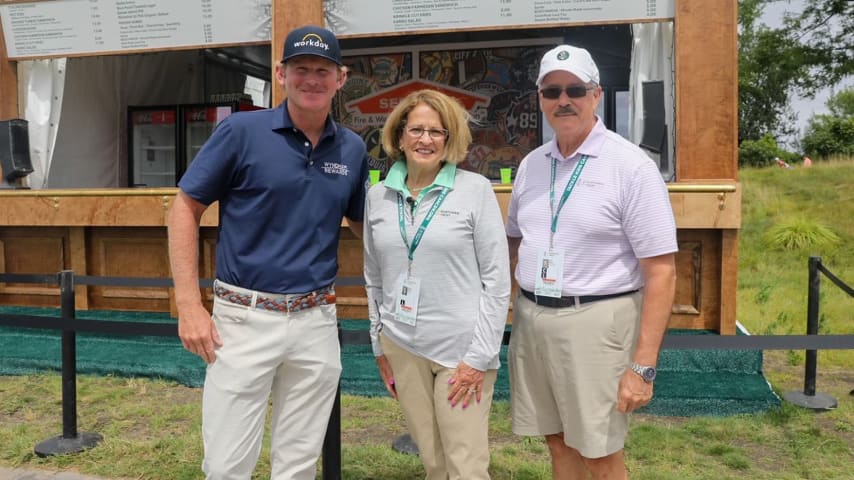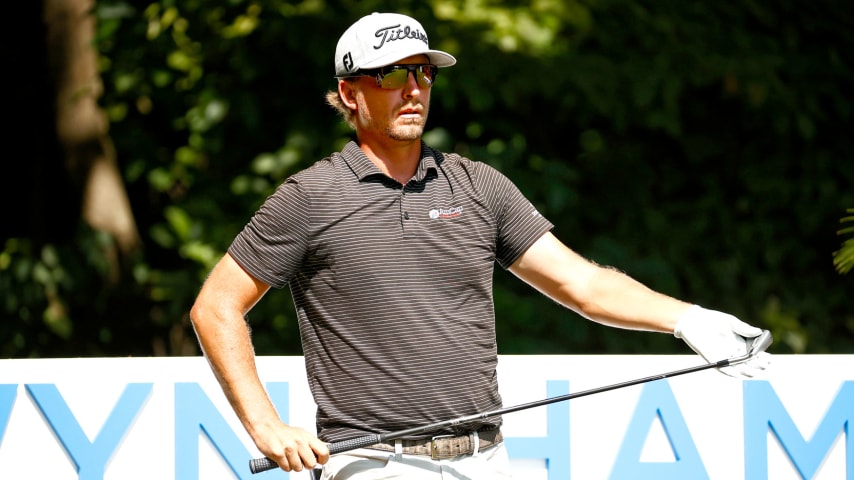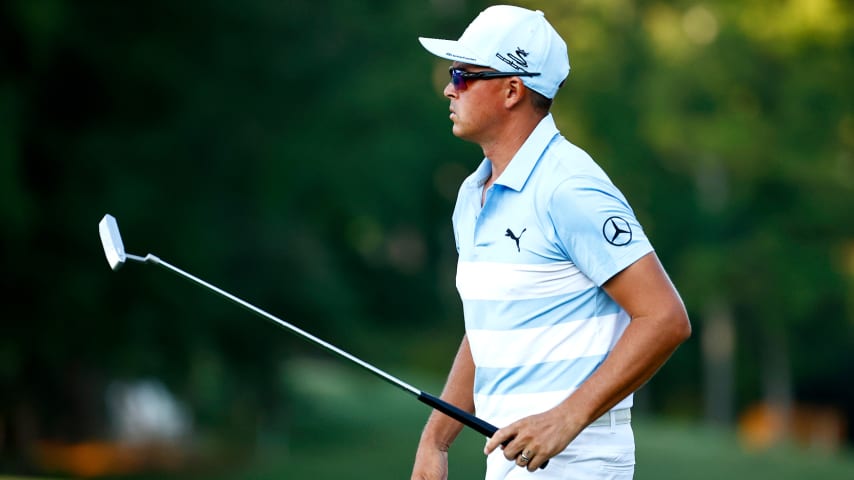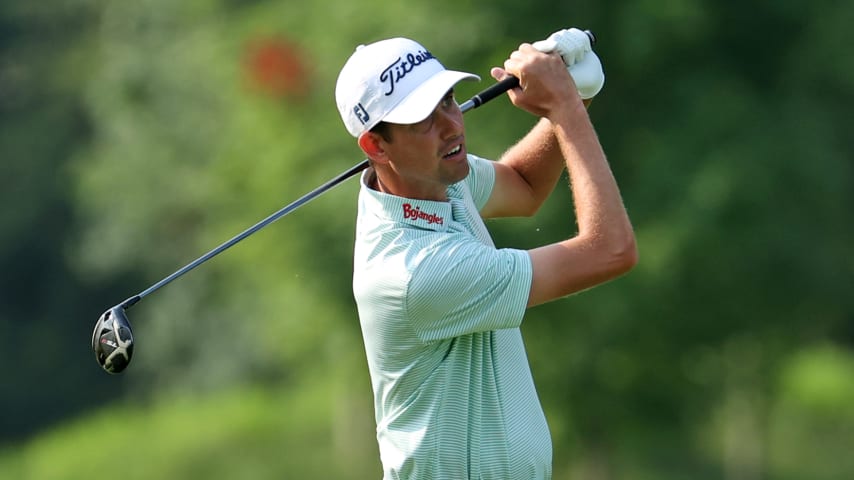THE NORTHERN TRUST honors 9/11 survivors and first responders
9 Min Read

Written by Helen Ross
Marilyn White and her husband Paul have volunteered at THE NORTHERN TRUST for more than four decades.
She chairs the player services committee that does everything from making sure the PGA TOUR pros and their families get picked up at the airport to getting their laundry done. She’s made dinner reservations, arranged museum visits and procured tickets to Broadway shows.
But the players Marilyn will help this week at Liberty National Golf Club probably don’t know what she and Paul, who announces their arrival on the first tee every day, went through 20 years ago.
They can’t comprehend the terror. Or fully understand the overwhelming feeling of gratitude she feels for the police, fire fighters and EMTs who put their lives on the line that horrific day.
But Marilyn lived it. So did Paul, helplessly watching the events unfold on the television at their home.
Marilyn was in her office on the 95th floor of the South Tower of the World Trade Center when Al-Qaeda terrorists attacked the United States on Sept. 11, 2001.
On Tuesday at THE NORTHERN TRUST, just across New York Harbor from where the Twin Towers once stood and more than 3,000 people died, the tournament Marilyn and her husband have helped nurture for more than 40 years, honored her.
She met some of the first responders the tournament honors each year, as well as PGA TOUR Commissioner Jay Monahan. Brandt Snedeker, who was a student at Vanderbilt when 9/11 happened, took time from his practice at Liberty National to spend some time with Marilyn, as well.
“I think it's something we all think about every year,” Snedeker said last week at the Wyndham Championship. “You hit that September date and you start thinking about how our world changed a little bit that day.
“Obviously, everybody knows where they were when that happened, and it was unbelievable to lose that many people in such horrific act of terror. It’s something I think that we hopefully will never forget and hopefully keeps us vigilant.”
He knew he would be moved when he spoke to Marilyn. It’s impossible not to be when you hear her story.
Marilyn remembers a September day that had dawned full of light with sapphire blue skies. She was working at her computer, her back to the narrow floor-to-ceiling windows that overlooked the Statue of Liberty, when the first hijacked plane bore into the North Tower between the 93rd and 99th floors at 8:46 a.m. She heard the boom and initially thought it might be fireworks.
Then she turned around and looked outside. Fire and debris were everywhere. She could feel the heat on her cheeks and worried that the windows might burst. People in her office were screaming, “Get out, get out” and banging on the elevator doors. She and a co-worker decided to take the stairs, which weren’t as crowded – “cascading like you wouldn’t believe,” Marilyn recalls -- and made it to what she now thinks was the 63rd floor.
At that point, an announcement was made that the South Tower was safe, and people could either leave, shelter in place or return to their offices. Marilyn and her friend ducked into the offices of Morgan Stanley and quickly found phones to call home. Her husband Paul had taken their son to school and was at their house, watching the news, terrified by what was unfolding.
“I’m safe. I’m okay,” Marilyn remembers telling her husband, although in the confusion, she never told him exactly where she was. “Don't worry. I'm not sure what we're going to do, but I just wanted to let you know.
“And then I said to him, ‘Oh my God.’”
That’s the moment Marilyn realized what she was seeing. People were either jumping or falling out of the North Tower. Paul told her to get out of the building immediately.
At 9:03 a.m., barely 15 seconds later, Paul watched in horror as the second highjacked plane plowed into the South Tower between floors 77 and 85. He knew the logistics and feared the worst.
“I thought she was still in her office on the 95th floor,” he said.
Marilyn was in the hallway of the Morgan Stanley offices when the second jet barreled into the South Tower. She remembers a deafening noise as the walls caved in. The building “started to vibrate like Jell-O.”
“Then we saw this fireball coming at us” Marilyn says.
She and her friend ducked into a room, which turned out to be a kitchenette with a sink and a watercooler. She took off her sweater, soaked it in water and stuffed it against door jamb to ward off any smoke or fire. They doused themselves with water, too.
When they opened the door, they could see a fireball caught in a backdraft, receding and then heading their way and receding again. The only way to escape was to make a break for it when the fireball was headed away. They did, found the exit and sprinted down the crowded stairs to the lobby.
Marilyn remembers passing firefighters who were heading up the stairs, not down to safety. One asked her whether there were still people on the higher floors. She told him yes. The firefighter pressed on.
“They were coming up and they had hoses wrapped around their shoulders, they had ropes, they had all sorts of gear,” Marilyn says. “And I was just in awe, because here I am trying to flee this tragedy and here they are walking up.”
Marilyn also remembers seeing people help each other down the stairs, supporting the elderly and injured.
“The sheer bravery of people helping each other in this just horrific tragedy,” she says.
Paul, meanwhile, was waiting by the phone at home, his eyes transfixed on the gruesome images on TV. His mother-in-law called to see if he had any news. The school their son, Paul, named after his father, attended in Connecticut called twice, urging his father to come get him.
By the time Paul got to the school, the South Tower had collapsed, killing more than 800 people, some 55 minutes after it had been hit by the plane.
“I knew it was Marilyn’s tower,” Paul says. “And Paul, our son, asked me that, was that mom’s tower that was on the ground. And I basically told him a story, I said, no, mom’s tower is still fine.
“By the time we got home, both towers are on the ground, and he wasn’t asking me any more questions. And the two of us just sat on the couch, fixated on what was going on on TV.”
Once Marilyn and the others got to the lobby, they were directed to a route through the retail area underneath the World Trade Center so they could avoid the bodies on the plaza outside. She emerged at street level at the corner of Broadway and Vesey, then turned and looked at the haunting sight.
“We saw both World Trade Centers,” Marilyn says. “Both holes were at different levels. At 1 World Trade Center, the hole that the plane went through was at a much higher level than at 2 World Trade Center.”
Her co-worker left her at that point to head to his home in New Jersey. But she ran into a fellow Fiduciary Trust employee and together they ran to the nearest express subway stop. She didn’t have any money because her purse was in her office. Neither of them had their metro cards.
“We just jumped the turnstiles, got on the subway and got up to Grand Central,” Marilyn recalls.
That’s when they saw a TV at a newsstand and realized the extent of what had happened. Her friend found an ATM and got some money for them both. They got on one of the last trains to leave before Manhattan Island was locked down.
“On the train, I was just shell shocked,” Marilyn recalls. “I was listening to people, hearing what they thought was going on and so forth. And it was just really trying to absorb what I'd been through, what I saw. So, I just stayed very, very quiet on the train. …
“I just wanted to get home because I was just so scared and just wanted to be with my family.”
Paul and his son were frantic, too. “We were basically just there waiting and wondering, and hoping and praying that she would be fine,” he says.
Marilyn got off the train in Scarsdale and immediately went to the Central Cab Company stand. She used their service often, and one of the guys came over and said, “Mrs. White, you don’t look so good.” She told him she had been at the World Trade Center.
“They just put me in a cab and sent me straight home,” Marilyn says. “And then dropped me off in front of our house. I walked up the front walk and walked in the front door. And that was the first that they knew that I was okay.
“It was a really good feeling to be home.”
Marilyn will never forget what it felt like to see her family that day. For the first time since she’d heard the explosion at the North Tower and looked outside her window, she felt safe.
“To lose that sense of feeling safe and secure, was something that I'd never felt before,” Marilyn says. “Coming home and feeling that, feeling safe, and having my son and having my husband hold me and hug me, it's … an indescribable feeling.
“Family always comes first. … But feeling it that day so acutely … intensified my feeling towards family and how my relationship with my husband, my relationship with my son, our family is first and foremost. It was totally clarified.”
The Whites’ son was acutely affected by the events of 9/11, as well. While Paul was at Boston College, he received a Fulbright Scholarship and studied at the Institute for Peace Research and Security Policy in Hamburg, Germany. He served in the ROTC when he was doing graduate work at the University of Chicago and later spent seven years in the Army, deploying twice and rising to the rank of captain. He now works in the State Department.
“I'm ever so proud of how he has taken the 9/11 experience and has developed it into a path for him, where he wants to serve his country,” Marilyn says. “And the first step for him in serving his country was to join the Army … And very proud that he would want to put his life in harm's way the way I saw a fireman put his life in harm's way for me.
“Then once he had decided to leave the Army, and he wanted to still build upon serving his country but to do it in a different way. As his little daughter, Evie, says, ‘My daddy works at the State Department. He's going to help people talk to each other and listen to each other.’
“So, for him to take it to another level is just, just so proud. And I just can't wait to see … his journey, where it's going to take him.”






